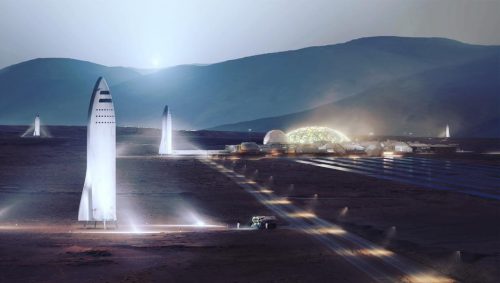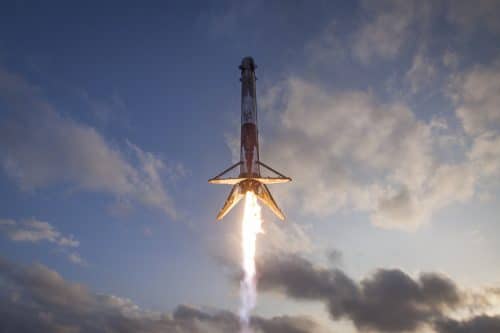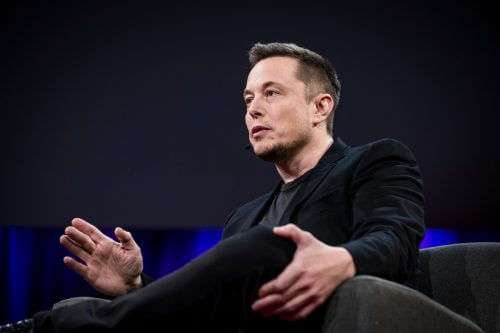On the occasion of World Space Week, let's talk a little about Elon Musk's space settlement plans - the inventor and visionary who recently stated that he intends to settle a million people on Mars

We will do it in eleven points, because really, for such a huge vision, the tradition of only ten points is not enough.
Musk started out as a young Internet entrepreneur. At the age of 25, he opened an Internet company for information in the field of journalism, and sold it within a few years for 300 million dollars. At the age of 29, he opened a company for convenient payment via the Internet. It is now known as PayPal, and was sold for one and a half billion dollars. Then, at the age of 32, he decided to challenge himself even more - and reach Mars.
The company he opened to achieve this goal - Space-X - is a company that launches and transports cargo into space. To establish it, he invested a huge fortune of his own, for the simple reason that no one was willing to invest in the field. Since then, by the way, he also founded the Tesla company for the development and production of electric vehicles, Solar City for the development and production of solar roofs and batteries for energy storage, and several other ventures with the potential to change the world. But since the story is short, we will continue to focus here on his activity in space.
Space-X has concentrated for the past fifteen years on the development of extremely cheap rockets. It uses the most advanced engineering tools - computer modeling, 1D printing of components, artificial intelligence to optimize each component and the control of the entire missile - to reduce costs to the minimum possible. As a result, it was able to develop the sophisticated Falcon 9 and Falcon 390 missiles at a cost of only 1 million dollars. Does that sound like a lot to you? Well, the US government did the math and discovered that if a government agency like NASA had to do a similar development, the cost would be ten times higher (four billion dollars) [XNUMX]. This is what happens when a certain field matures, leaves the government's hold and goes to private entrepreneurs.
In 2017, SpaceX was already successful to recycle a missile: launch it into space, then land a large part of it back aboard a robotic ship, so precisely and delicately that it can be used again. For you to understand what it means: think what would happen if we had to trash airplanes after they had only made one flight. A flight on a Boeing 737 would cost $500,000 per person, if it were a consumable product. This has been the case so far with missiles. Not anymore [2].

NASA has already signed contracts with SpaceX to send astronauts to the International Space Station, but Musk is aiming for more. At the beginning of the year, he announced that in 2018 SpaceX will launch two "Hollywood Zeros" for a one-week trip around the moon, at the same cost of flying astronauts to the International Space Station [3].
It is no exaggeration to say that Musk has reshaped the space market. Back in 2014, SpaceX won almost half of the global tenders for launching cargo into space [4] - while the Russian space services failed to win even one tender. The competitors in Europe declared that "things must change... and therefore the entire European industry is reshaped, crystallized, professionalized and perfected." [5] And just this year, in the United States, the "Joint Launch Alliance" of Boeing and Lockheed Martin announced that it intends to redesign itself in order to reduce launch costs by half, in an attempt to compete with SpaceX [6].
So it certainly won't surprise you to find out that when Musk announces plans for the future, the whole world stops and listens. And so it happened in the last few months, when Musk published his complete plan to populate the planet Mars with one million people [7], in a period of time ranging from forty to a hundred years from today. Why? To provide "insurance for the human race", in case some disaster occurs on the face of the earth. We will talk about the idea of insurance later, but for now we will focus on the technical plans.
To colonize Mars, Musk plans to develop giant rockets that can be recycled and reused, and will reduce the cost of flying to Mars by thousands of meters - so much so that the cost of flying one settler will reach two hundred thousand dollars - roughly the price of a closet apartment in Tel Aviv. He plans to build the colony itself in four stages.
In the first phase in 2018, SpaceX is supposed to launch a probe to Mars, which will examine the most suitable place to establish a colony and ways to produce fuel from the carbon in the thin atmosphere of Mars and the hydrogen that will come from water ice on the surface of the planet. In the second phase, a small fuel production plant will be placed on Mars, which will be able to support the following activities. In the third phase, five years from now, the first humans will be launched to Mars, and hopefully will also return from there using the fuel and resources that will already be available for their use on the planet. And in the fourth stage - well, a whole colony is already planned there, with "iron industries and pizzerias", according to Musk [8].

But could such a colony really provide an "insurance certificate for the human race"? Only if it can sustain itself on its own, and without dependence on the Earth. We are beginning to understand that such a future is possible thanks to the capabilities of mining resources (water, metals, etc.) from asteroids and the Martian soil, but it is clear that there is still a need for a huge leap in our technological capabilities, with an emphasis on creating food and maintaining human health in space. It is hard to believe, therefore, that a long-term sustainable colony - one that holds a million inhabitants, according to Musk's plans - could be built on Mars before the end of this century.
Which brings us to the conclusion: all this sounds futuristic - and the vision is really long-term - but the first steps are already being taken today. The fuel tank needed for Musk's giant spaceship was already successfully tested last November (pictured), and it is no exaggeration to say that space enthusiasts all over the world are starting to reorganize their dreams and expectations according to Musk's predictions for the future. No one expects him to stick to the schedule he set, since Musk has a chronic tendency to be overly optimistic in the times he sets. Even so, everyone understands that Musk is talking about a vision for a new future: a future in which flights to space are cheaper than ever, and that technologies reach a level that allows the establishment and maintenance of robotic factories on another planet. If Musk's vision comes true, then we will certainly be able to establish a colony on Mars, when the time comes. And if you want to join it, you are welcome to contact Space-X. Successfully!
Reference links in the first response to the source on Facebook
-
If the future of humanity in space interests you, you are invited to my lecture on the subject (which will be delivered via the robotic body in Israel) as part of the Space Week events in Israel. The lecture will be held at four different times: in Beer Sheva (5.10, 20:30 p.m., Al-Taqida, Smilansky 13), Tel Aviv (7.10, 21:00 p.m., Hodna, Abarbanel 13), Haifa (8.10, 21:00 p.m., Syncope Kiat 5) and Jerusalem ( 10.10, 21:00, Avraham Hostel, Hanaviim 67).
If the future of humanity interests you at all, you are invited to read my new book who control the future, in the leading bookstores.
See more on the subject on the science website:
- Elon Musk reveals the way he will pay for his giant Mars rover
- Will Elon Musk and SpaceX establish the first human colony on Mars?
- Elon Musk: The Dragon 2 spacecraft will not be able to make a motorized landing; will soon update his plan to man Mars
- Elon Musk: There is a chance that within 10-12 years it will be possible to send humans to Mars
- SpaceX plans to launch two space tourists next year for a flight around the moon

11 תגובות
There is no chance of living on Mars, because its diameter is half that of the Earth, and therefore its small gravity is able to maintain an atmosphere of only about 30 km, because it is 70 million km further from the Sun than the Earth, and therefore the temperature on its surface It does not rise above minus 150 degrees, because there is no oxygen or water in it. In any other solar system, life is possible only on one and only one planet, on which all the many conditions for the existence of plants and animals are found. I believe that there is also life on a planet in other solar systems, but in a very limited number and unfortunately the chances of discovering them are zero.
I don't want to sound like a joy breaker but your performance in the robot body looks,,,,, a bit ridiculous. It is a tablet that is on wheels that move slightly on the stage. It is not different from any conference call that has existed for many years, this is not really a body that has hand gestures and turns towards the desert and expresses emotion. It's something a little amateurish and childish
Perhaps the direction of thinking should be in turning Mars into the basis of the raw materials for human existence systems located in artificial "super moons" that surround Mars and are constantly fed by it and the sun but maintain a local atmosphere as well as "gravity" that enables permanent human existence without radiation threats.
It is impossible to ground Mars without first solving the problem of the lack of a magnetic field. Mars does not have a magnetic field, therefore any attempt to create an atmosphere without a magnetic field to protect it is doomed to failure
Ben Ner:
There is (maybe) a solution to the cosmic radiation and the oxygen problem, it's called "earthing" and it's a process that will take between hundreds and thousands of years if it's possible at all.
What they do is seed the planet with bacteria, fungi, single-celled and other small creatures. One of them will manage to survive, one of them will manage to convert the gases there into oxygen and carbon.
This happened on Earth over millions of years (the formation of the atmosphere) and the hope is that with the help of man and technology, we can produce an atmosphere on Mars within hundreds or thousands of years.
A. Ben Ner
You will also get to issue a passport to Mars and if you want, you will also be the Indiana Jones of Mars.
Don't worry, Avi Roi and Alon won't be traveling.
Unfortunately, I have to take on the "not so endearing" job of disrupting happiness.
In my opinion, it will indeed be possible to reach Mars, and it will even be possible to return from it, but I do not see a practical possibility of maintaining a large and long-term human colony on Mars.
The main problem that will have to be overcome is the cosmic radiation problem that exists on Mars and stems from the fact that Mars does not have a magnetic field.
It is possible to plan protection solutions from cosmic radiation, such as settling in caves in the earth's crust or under metal protective roofs, but these solutions, at best, will be practical only for a few, professional survivors, not for the millions who are capable and interested in a daily life.
So what can we expect from Mars?
Probably mainly to have a base for extraterrestrial observations to study the solar system, space and the universe.
Something similar to the moon, but without the close influence of the Earth.
Does Alon Musk not understand this?
He understands very well.
But, Alon Musk is also a good salesman.
He needs a "good story" that will excite the imagination of the general public and the imagination of potential donors.
launch instruments to Mars. "It's not sexy enough."
Except for technicians and mechanics, machines "don't do it" for ordinary people.
But, "Settling Mars", is another story, which ignites the imagination.
It sounds and looks like the exciting new edition of Settlement America.
For this many people will agree to donate their money and even their lives.
However, I am sure that a rational person like Alon Musk will not be among them, and neither will Roy Tsezana.
They would not risk their lives for such a dangerous adventure.
But, even if these, Masque and Cezanne, decide after all, contrary to my prediction, to join the human journey to Mars, I will stand for one thing with all my strength, in my body and in my soul, with endless ferocity. And he, that ….
Shavi Blizovsky will not join the journey to Mars, but will remain here, in DHA, and will continue publishing the "Hidan" website.
This cannot be allowed to be destroyed by Alon Musk and Roy Tsezana.
It is possible to send an artificial womb to Mars with thousands of eggs and seeds
The bottleneck of flights to Mars is the flight speed. Today, a flight to Mars takes about 6 months. This means very heavy logistics in everything related to manned flight. Ways must be found to shorten the duration of the flight.
https://www.hayadan.org.il/mazarmars070603
Link to my article on the subject
https://www.hayadan.org.il/mars-colony-201104